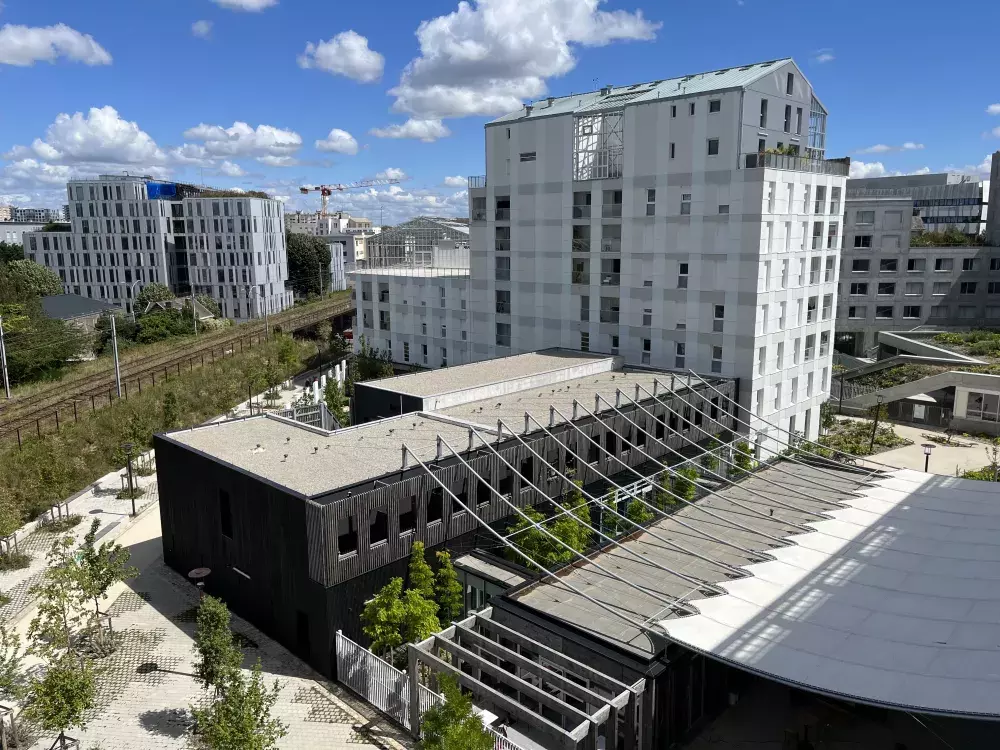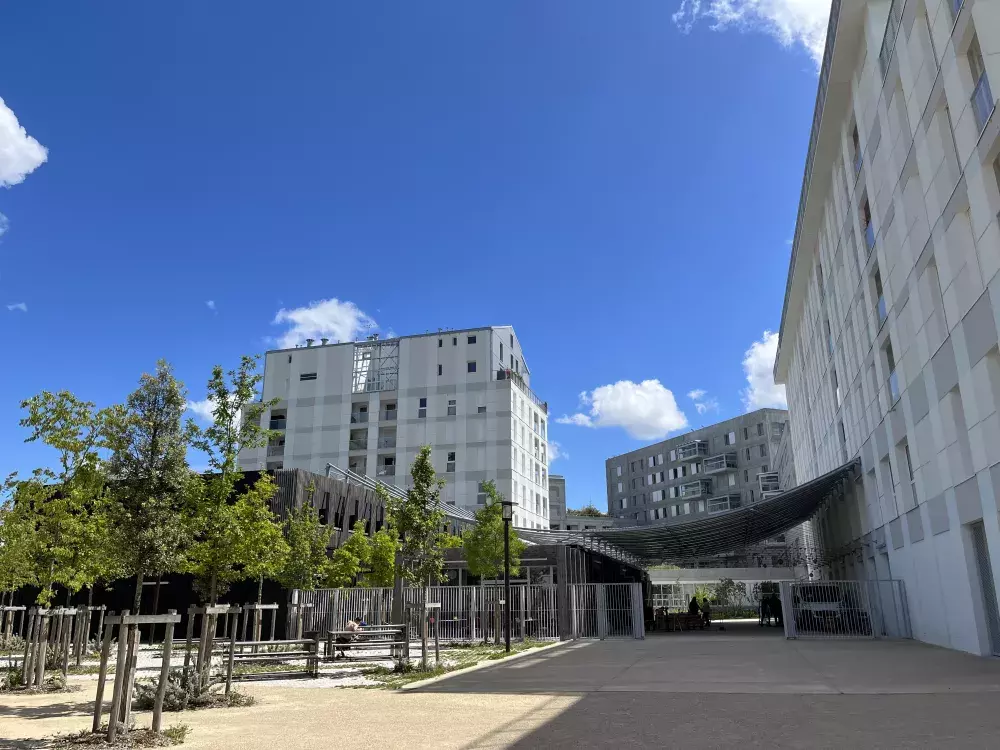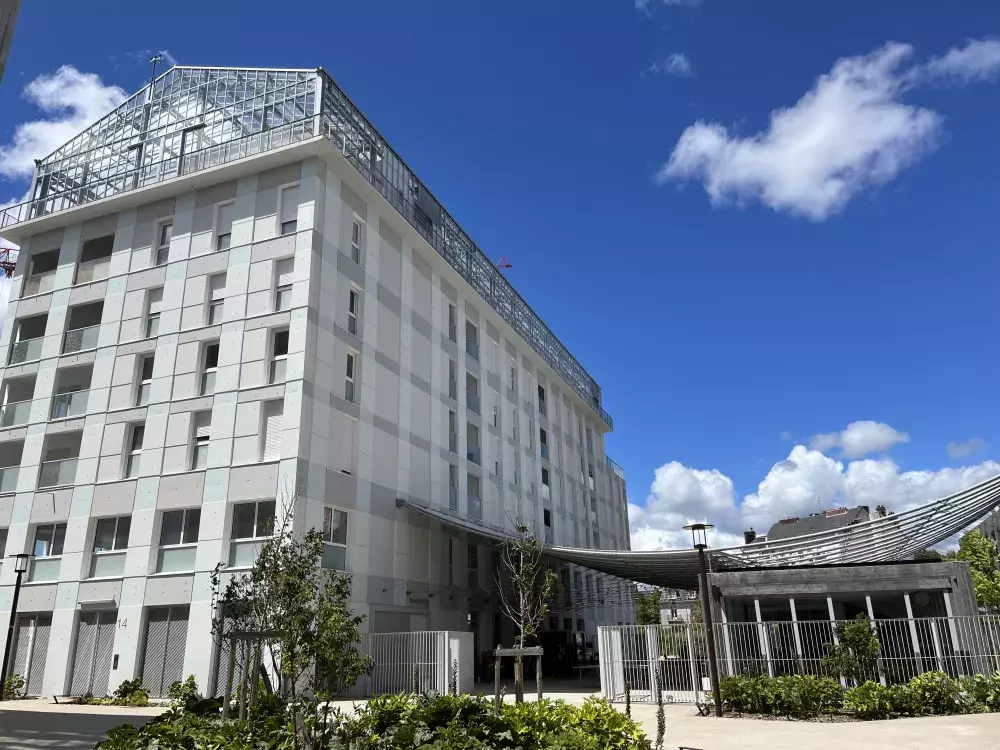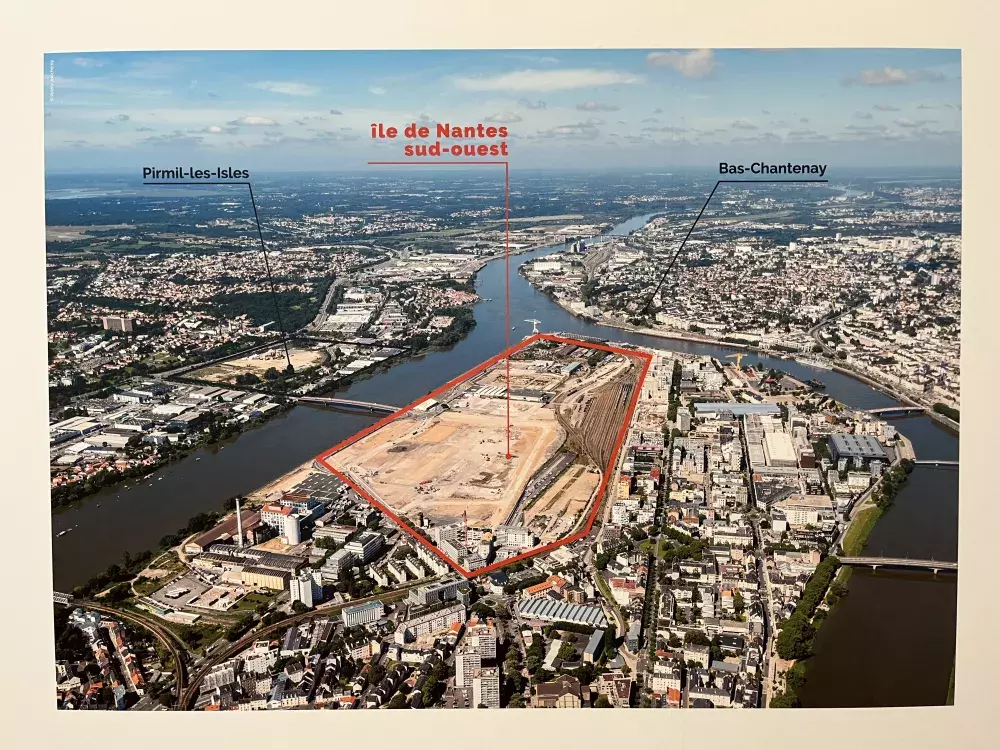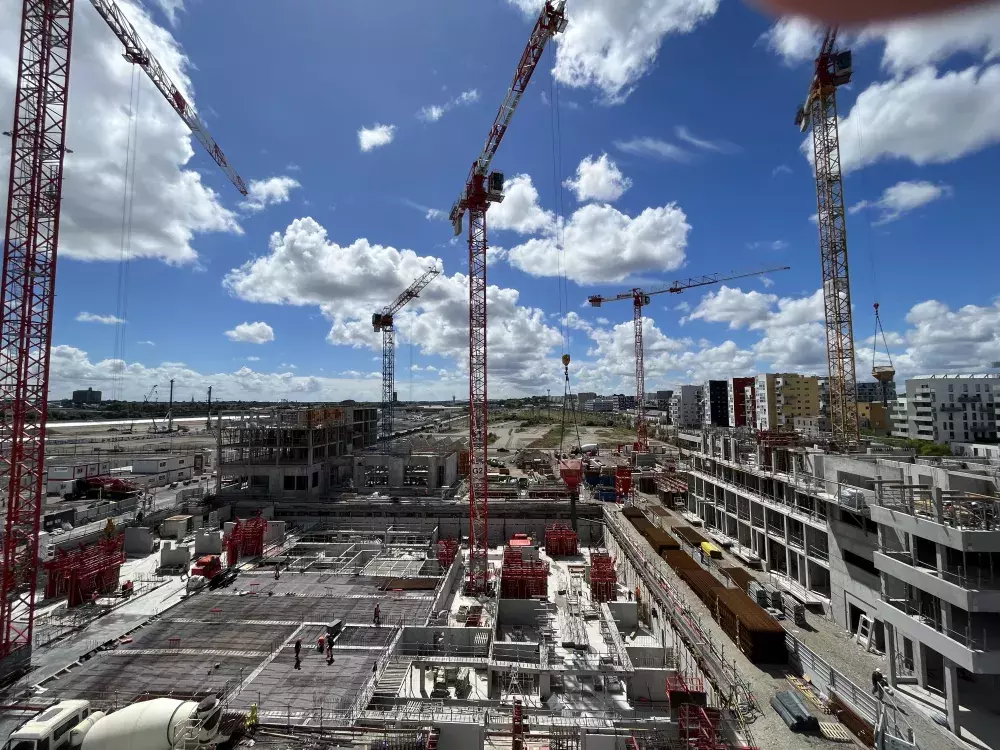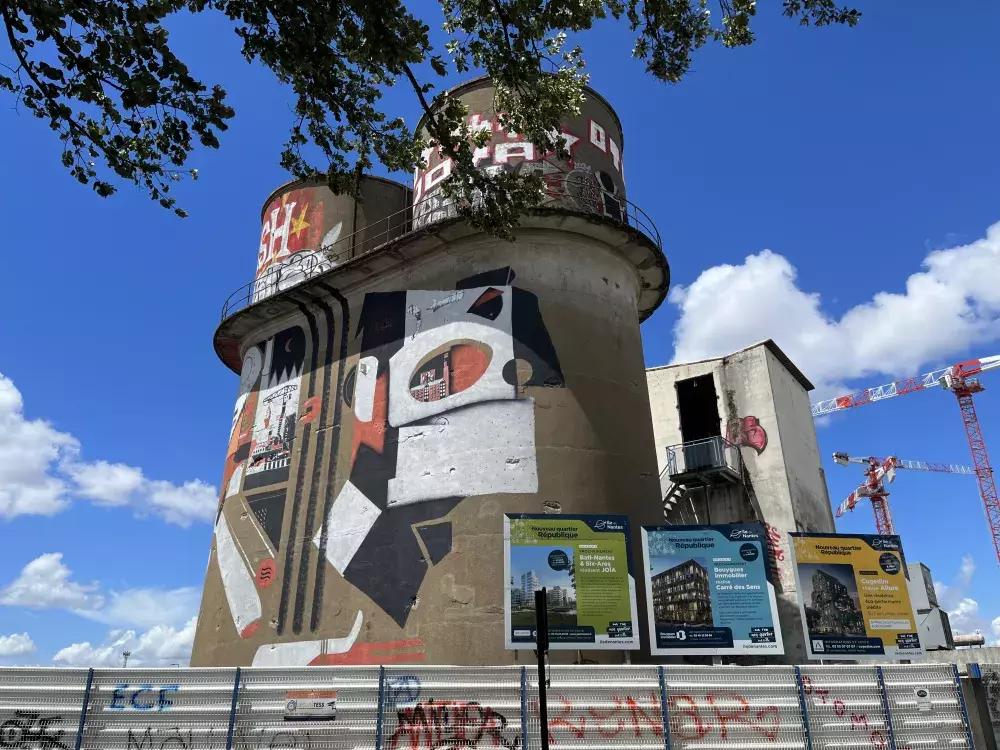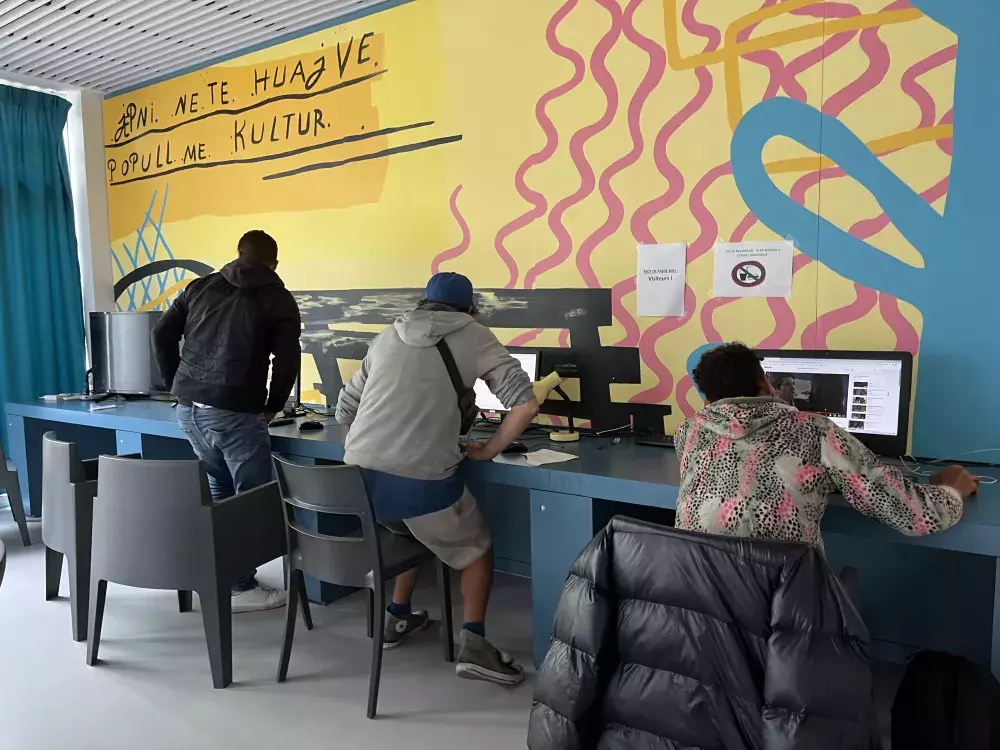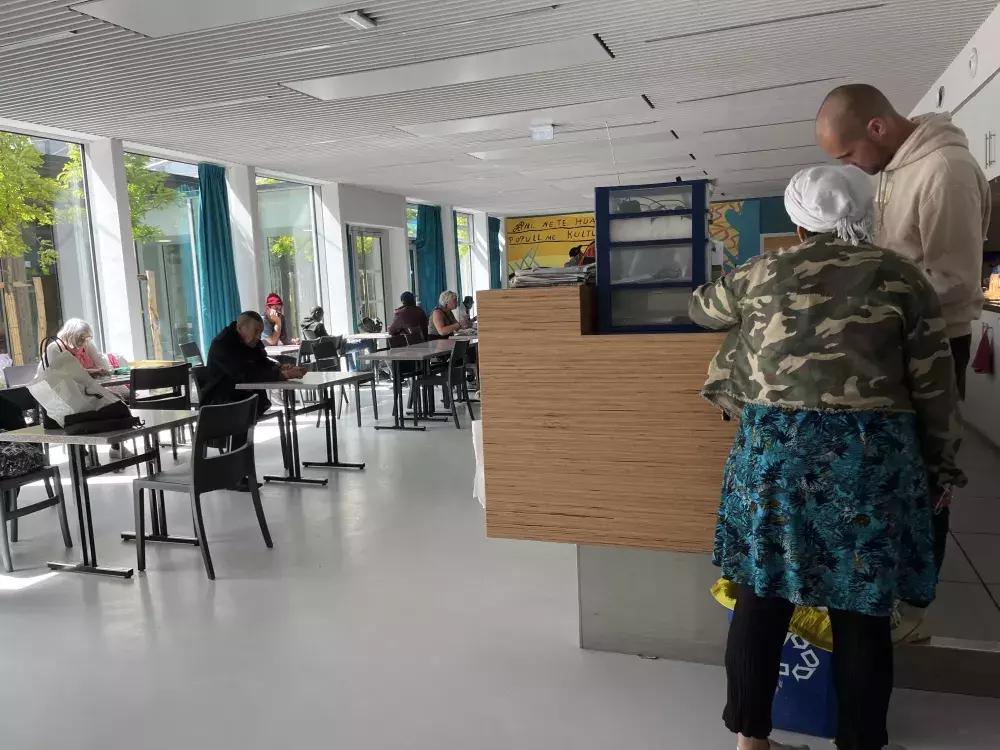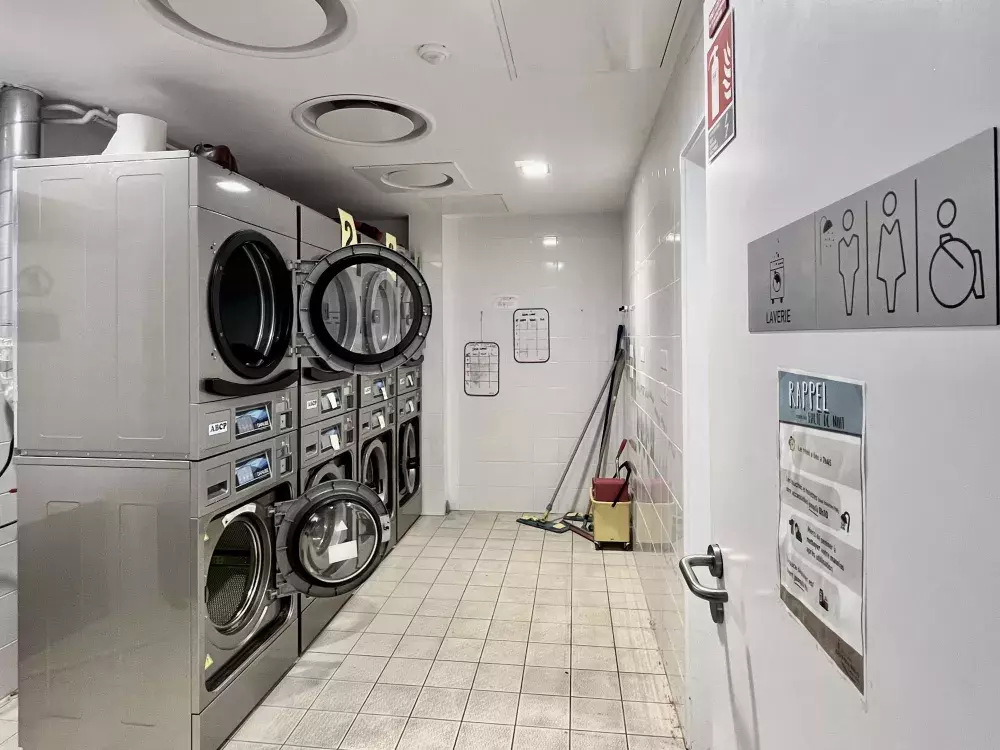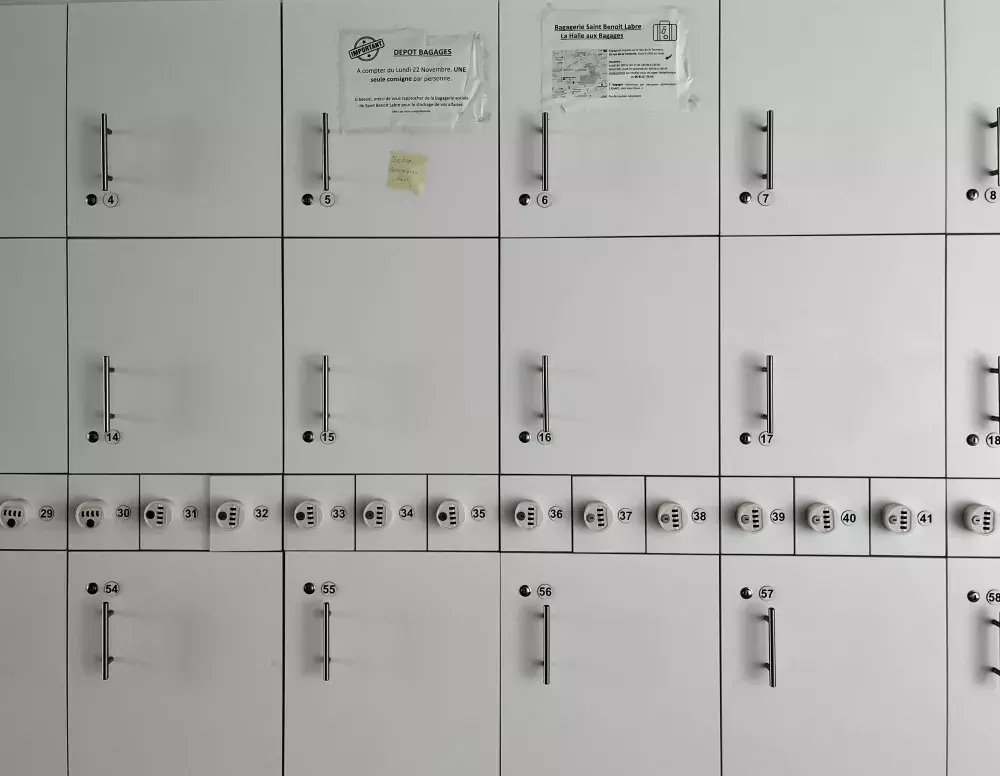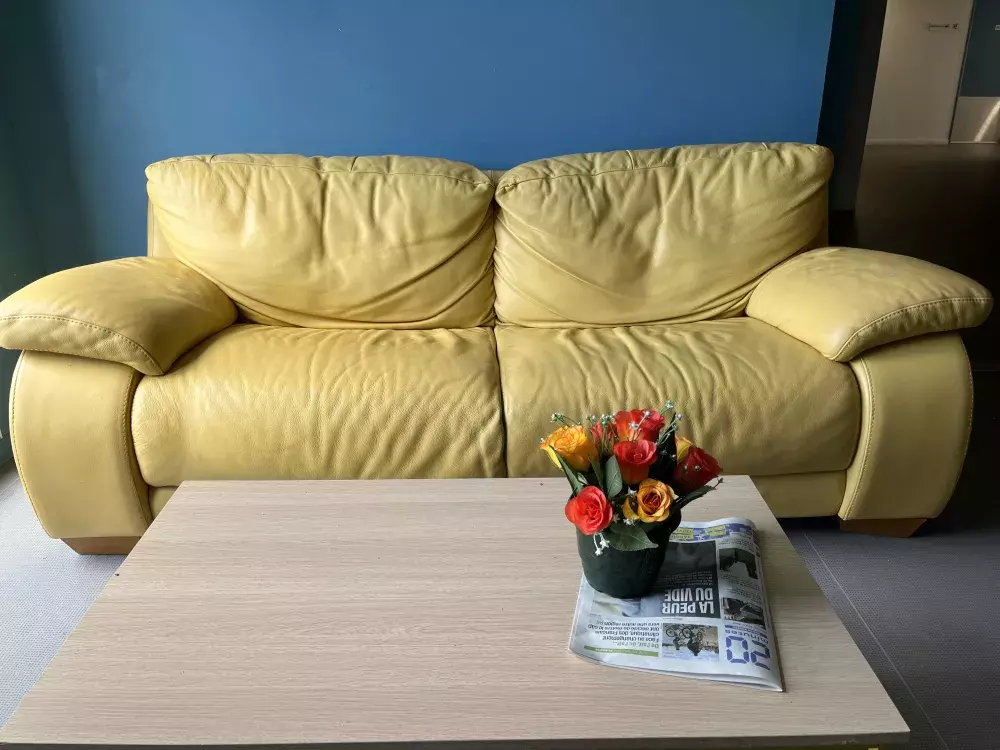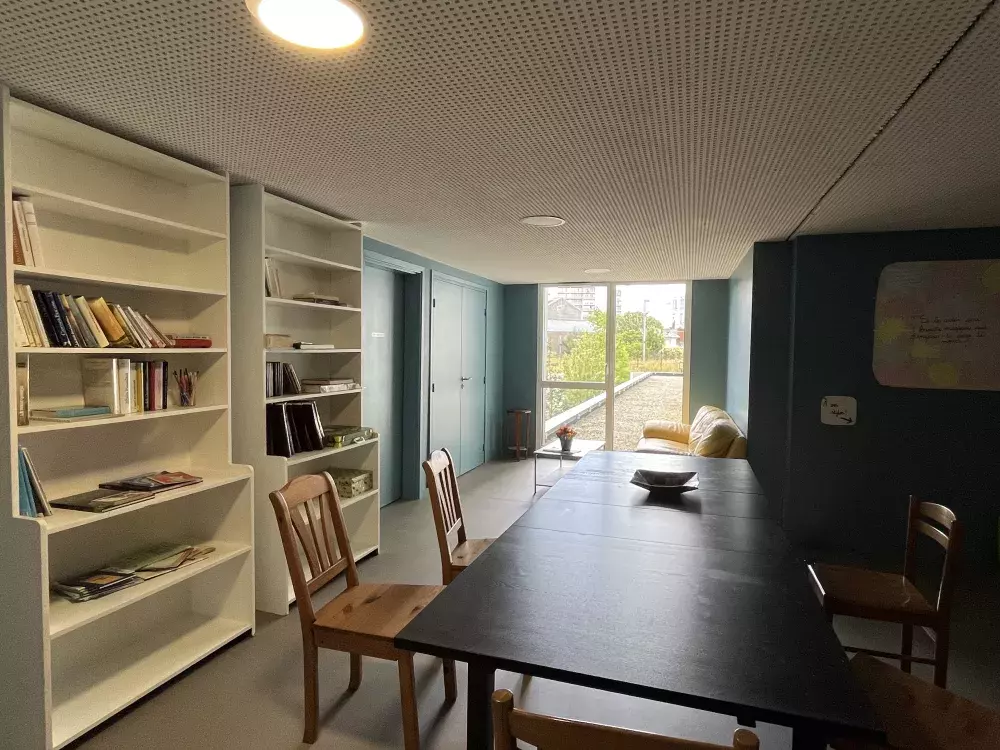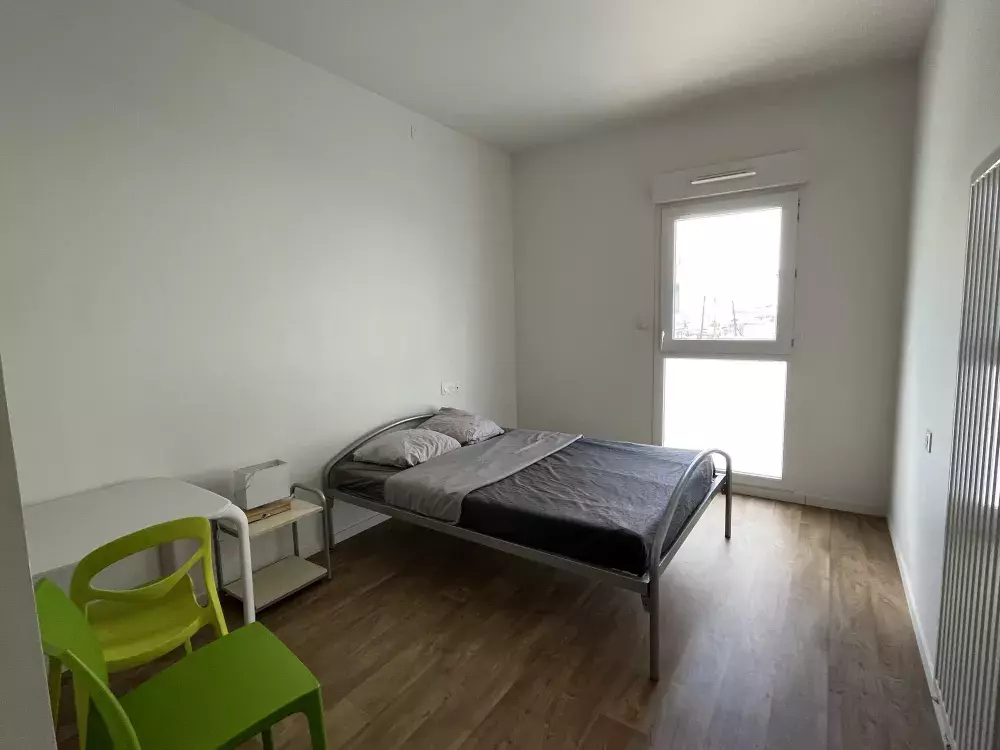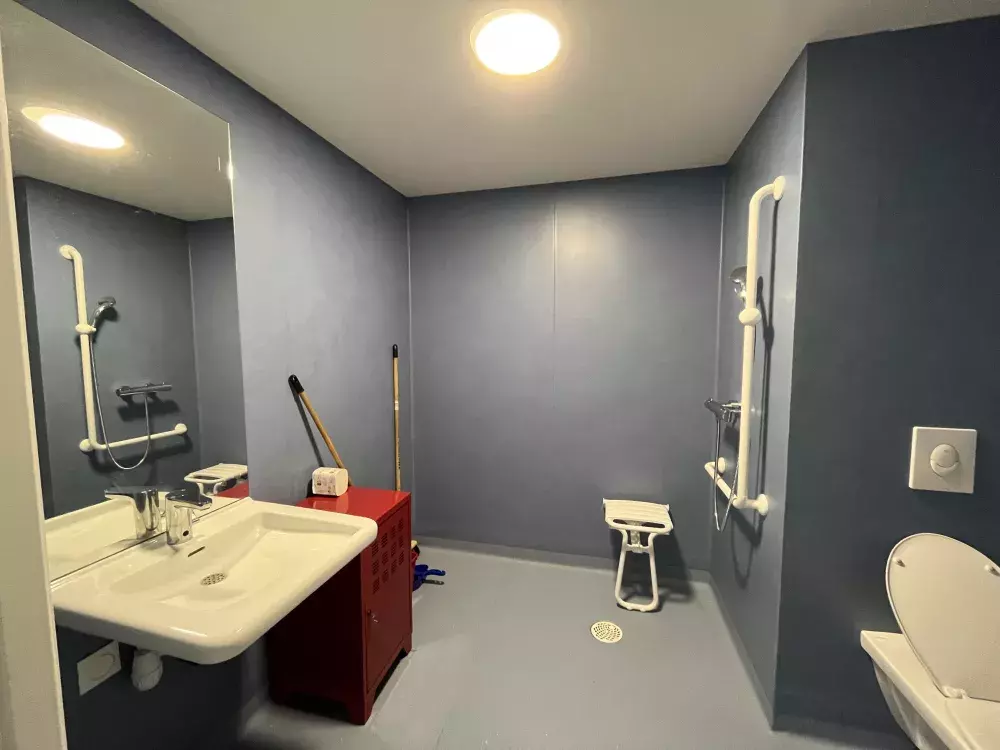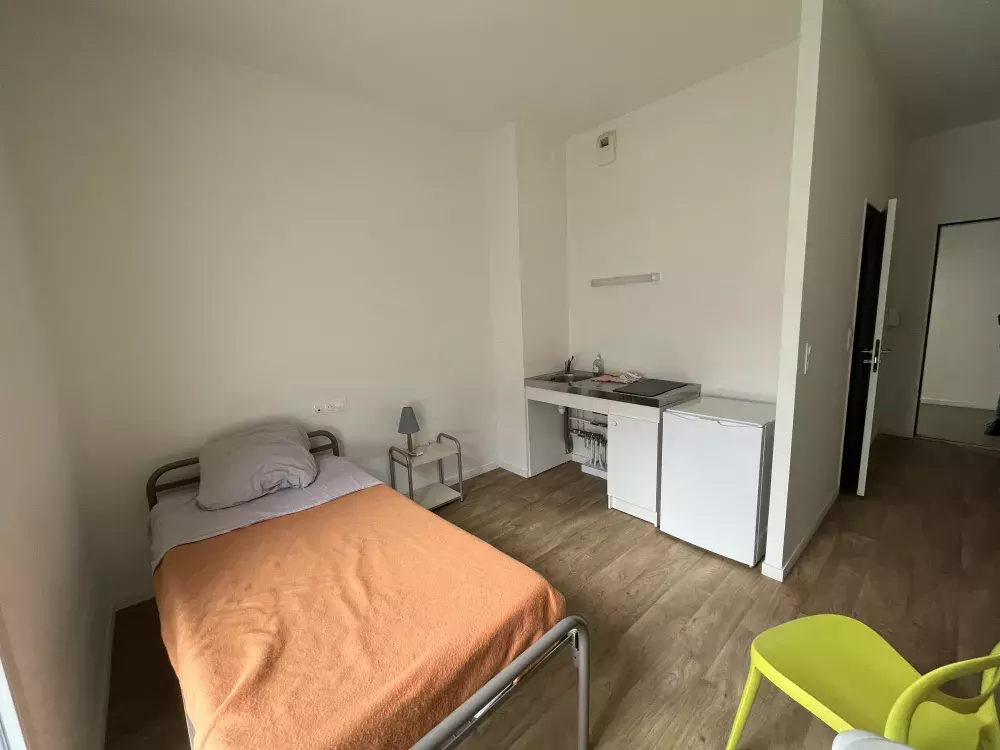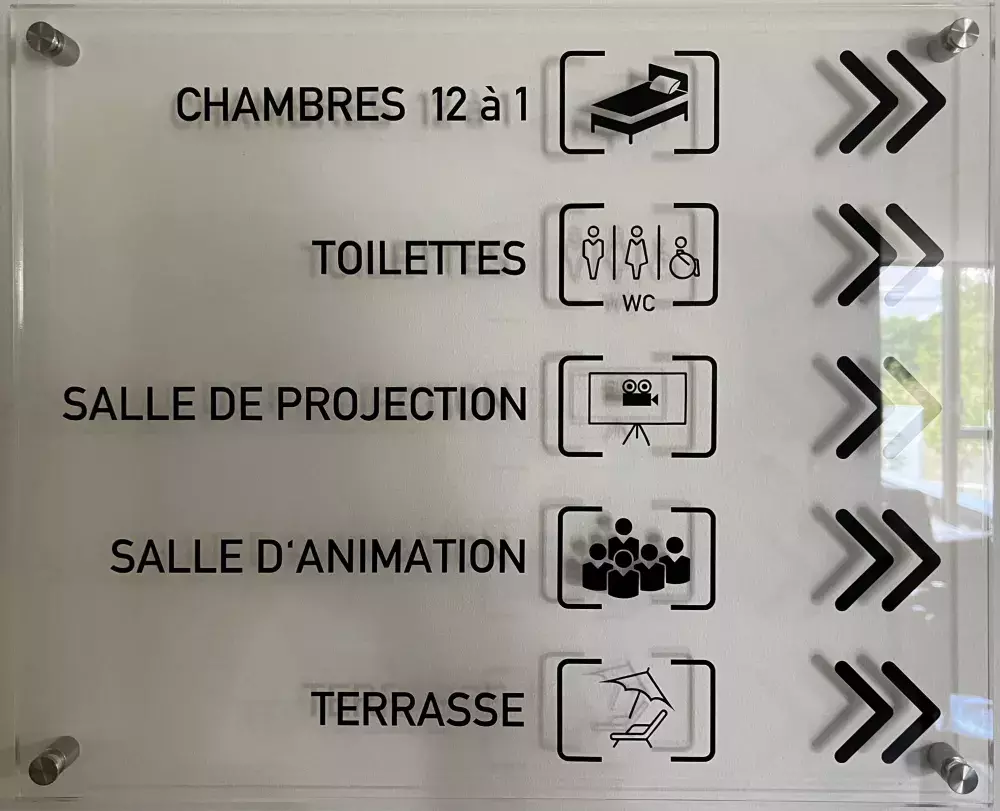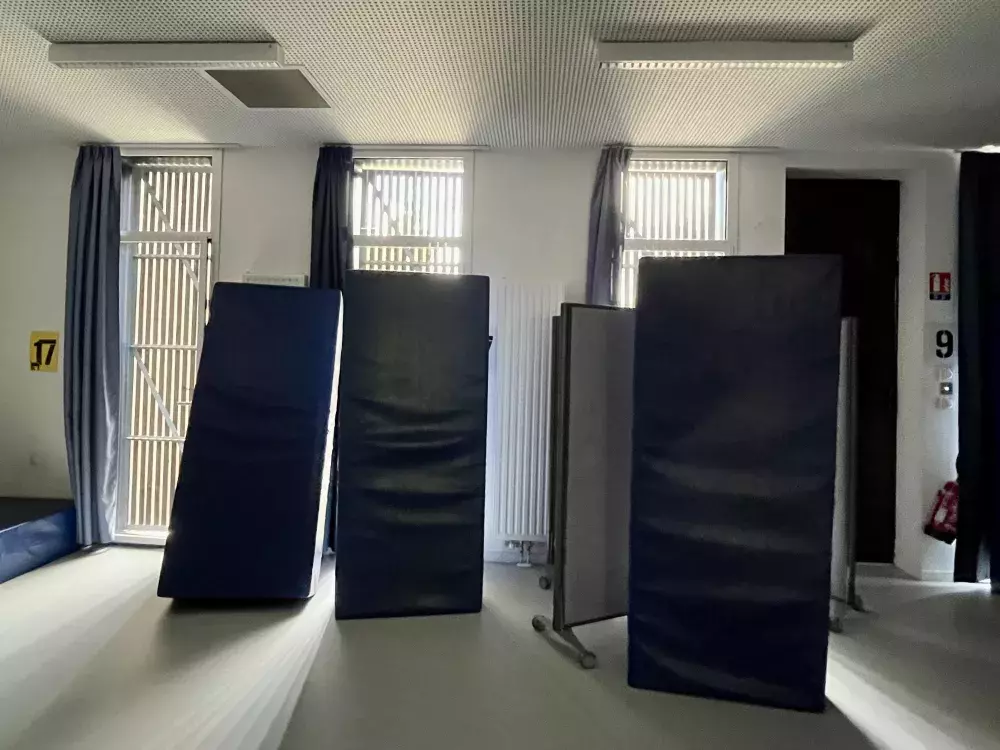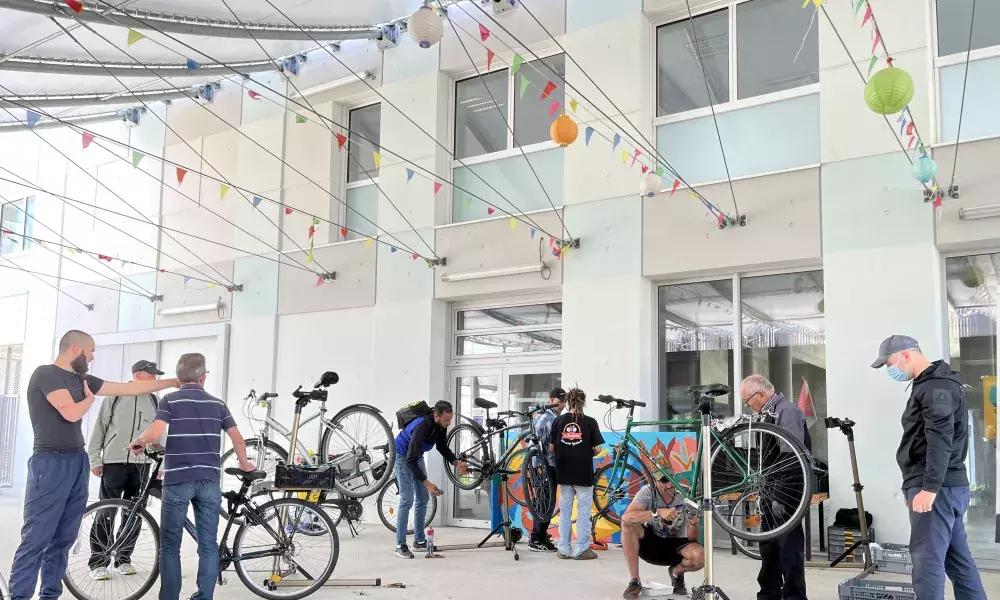
For the first time in Europe, all EU Member States have now formally committed to the goal of ending homelessness by 2030 (Lisbon Declaration, 2021) through the European Platform to combat homelessness (EPOCH), implementing the European Pillar of Social Rights Action Plan Principle 19 on Housing and Assistance to the Homeless. While commitment at the national level is critical to implementing homelessness eradication measures, the path to this goal must involve all levels of government, including local authorities. This is why European cities have been called upon to sign and commit to the Homeless Bill of Rights, and practises experimented at the local level, such as the UIA 5 Bridges in Nantes, can be an important source of learning for cities.
The 5 Bridges project launched in UIA under the first call in 2017 and officially completed in 2020 aims at breaking the circle of social and spatial polarisation, targeting the city’s homeless and socially excluded population. The city of Nantes is struggling to meet the needs of homeless people living on the streets and is struggling to provide social housing for 30,000 people on the waiting list. With 5 Bridges, the municipality wanted to show that solutions to provide multifunctional support to homelessness can be of high quality, can be implemented in the heart of the city, namely in the urban island of Nantes, and involve the local community, favouring social mix and the creation of a “quartier pour tous” (neighbourhood for all). The idea came about through the work of the non-governmental organisation Les Eaux Vives, which was dissatisfied with the inefficiencies, gaps, and geographic dispersion of available services for the homeless in the city and was willing to bring together in a single place its activities, which until then had been spread over five sites (2,500 people welcomed per year, 80 volunteers, and 80 employees).
With firm and steady support of the local government under the guidance of Mayor Johanna Rolland (Socialist Party), a public investment of almost 22 million euros was offered: the Nantes Metropole offered 372,000 euros, the City of Nantes 300,000 euros, the Department 300,000 euros, the Region 1 million euros, and European funds 5 million euros). The contracting authority for the operation, CDC Habitat, provided the majority of the funds, namely 14 million euro, and 5 million with the European Regional Development Fund (ERDF) through UIA, additional funding from other source not reported. The 5 Bridges features three buildings where several activities can coexist: general public housing, accommodation and services for the homeless, an urban farm, a solidarity market, a café, and a garden. A village square has been laid out in the middle of all these activities, covered by sails. It provides comprehensive and tailored services to unhoused and vulnerable people, such as: one-stop shops that provide housing and health-related services; support to enter the job market while proposing and testing new jobs; and a participatory approach to foster social integration and empowerment (including a neighbourhood restaurant, an urban farm, a solidarity shop, temporary and social housing, and low-threshold care). The 5 Bridges, also named the Solidarity Village, became active in spring 2021, entailing the construction of 9,575 m2 for accommodation, 2,565 m2 of equipment, 957 m2 for public activities, 716 m2 of offices, and 504 m2 of shops.The partnership for the implementation includes the Ville de Nantes, Nantes Metropole; Association Les Eaux Vives (LEV) Emmaüs NGO; CDC Habitat (a builder and housing manager; CDC Habitat is a 100% subsidiary of the National Caisse des Dépôts); Société d’Aménagement de la Metropole Ouest Atlantique (SAMOA), a local public development company; Quai des marchandises; and Les Cuisinieres (lately added to the NGO La Sauge).
A wide range of activities have taken place in the 5 Bridges project since the publication of the latest’ UIA journal. This journal, officially the 4th one, will briefly account for the overall project with the latest achievements, which lead to the state of the art reported here in July 2022. As a result, this journal offers a state of the art following the project's completion as well as a transversal analysis of the project with lessons learned and suggestions, which could help the project's partners and other cities considering taking a similar path reflect on their work.
This journal is based on the UIA journals written by 5Bridges expert Frederik Spinnewijn, who closely followed the implementation phase of the project. To complete this journal, research in grey literature and local newspaper articles, interviews with key stakeholders, and a site visit were conducted in July 2022. Even though the main focus of this account is not on the 7 UIA challenges, as in the previous journals written for this project, these challenges have been considered and, wherever appropriate, embedded to ease learning and potentially transferability of this practise. www.5ponts-nantes.eu
The 5Bridges is situated on the historic shipyard of Nantes Island. Close to the city centre, the island is a ZAC (Zone d'aménagement concerté-Concerted Development Zone), a planning instrument existing in French law since 1967 that allows the development agency to sell publicly-owned land to developers with specification sets and requirements for urban regeneration. Currently, the ZAC is undergoing redevelopment by SAMOA, the official partner of 5 Bridges, a privately owned public agency. The whole regeneration plan includes the construction of 2000 new apartments (of which 55% are social housing), a 75,000-square-meter building devoted to the tertiary sector, and more. Tucked away among imposing contemporary structures, the 5 Bridges seem like a brand-new complex is an architecture that barely interacts with the surrounding still-under-construction areas. No sign directs passersby to the 5Bridges unless one ventures into one of the small streets between the large surfaced new housing estates with student apartments. 9,600 square metres make up the built-up area of the 5 Bridges complex which is split between two structures joined by a sail and a sizable esplanade that faces the neighbourhood. Since the summer of 2021, the 70 dwellings built in this area are inhabited.
In July 2022, the 5Bridges project was completed for all construction works anticipated in the design phase—scaled back from the original plan following the discovery of unexpectedly costly capital expenditures for soil decontamination—and working at full speed for the central part of the block concerning the 24/7 service for the homeless, the offices, the urban farm on the ground floor, the restaurant, and the solidarity café which will be described more in detail in the following sections. Other activities foreseen in the plan have been put on hold because of several delays accumulated during the construction period (e.g. 6-9 months for the realisation of the rooftop greenhouse) and due to the pandemic crisis, which caused economic hardship to many associations that could hardly keep up with the promised actions of the project (e.g. Emmaüs 44 who was supposed to manage the solidarity shop, and The association La Sauge who had not enough funding for launching the greenhouse production). The following session will give a state of the art as in July 2022.

.
At the first-floor entrance to the main building, a room has been set up with a reception desk with social workers registering and providing information to the incomers. Information about using a closet near the entrance, accessing the ground floor dormitory (a night stop with thirty spots), using one of the health care services, and other support services like medical assistance are available on certain days of the week. Open to the public from Monday through Friday from 11 AM to 18 PM, the Solidarity Café has a few tables with Internet-enabled desks and sells coffee for 60 cents and other beverages for 70 cents. The 5P Bridges Welcome Center is open every days of the year, 24 hours a day, thus making it possible to offer more stability and a better support for people in great difficulty. The customers are of different nationalities, ages and genders.
Even though there is a student residence nearby, at the time of the report dating (July 2022), there are no students using the premises, e.g., cafeteria or restaurant: interviewees report that occasionally they use the ground floor laundry service. The majority of the people using the premises are male, but there are also casual customers who spend some hours in the cafeteria open to walks in from the neighbourhood.
I like to play board games, and coming to this cafeteria makes me chase away my loneliness at home.
The main building of the Solidarity Village covers a) a day center with 80 places b) A night stop with 30 places c) A housing center with 40 studios. These are intended to take the place of the current, sporadically dispersed, night-only shelters around the city, which lack the infrastructure necessary for carrying out contemporary social support services. The 24-hour shelter provides thirty overnight accommodations for individuals who were denied entry into the city's housing integration and accommodation programmes, as well as forty studios for singles or couples. Its purpose is to facilitate social reintegration and provide temporary shelter while working towards long-term solutions. This shelter is an extension of the 115 system, which has been criticised for being challenging to use for many those in need (Spinnewijn, 2018). People coming to the 5 Bridges have to comply with the Rules the 5 Bridges welcome centre. Among the 40 there are 5 called trampoline dwellings used as a sort of training houses in which shelter users, who have made sufficient progress on their non-housing problems, can test whether they are ready enough to move on to permanent mainstream (social) housing. This approach has raised legitimate concerns about the innovativeness of such solutions, which impede or slow the process of accessing adequate, secure, and stable housing for people experiencing homelessness. Housing First model experiments have demonstrated “that even homeless people with complex problems do not need to be trained to become housing-ready” . In the site of the Village Solidaire, other dwellings have been built to enhance the social mix in the area, with 50 apartments for HLM social housing and 21 for private ownership, which have been built with the largest funding share in the project by the CDC Habitat. No apartment dedicated to Housing First has been foreseen in the area. Reports show that the selling has been eased by dwelling prices below average costs in Nantes, and both homeowners and tenants have been fully aware of the social mix and their participation in the 5 Bridges project. The whole idea was to enhance collaboration between new inhabitants in the quarter and the users of the multi-functional centre in the Solidarity Village.
However, in the first year after the 5 Bridges opening, the collaboration had not brought the expected results between the tenants, the homeowners, and the customers of the facilities. During the site visit in 2022, it was found that some ground-floor spaces of one of the buildings in the Village Solidaire were burned out. Talking to one of the house owners, we were told that during the cold days, many people wanted to use the facilities of 5 Bridges and not all of them could actually be accommodated. Once at the 5 Bridges site, apart from its facilities, there are no other options for homeless people nearby on the island of Nantes than squatting. The squats and the fire accident prompted a group of homeowners to write a public letter complaining about the difficulty of reconciling their family-oriented lifestyle with Village Solidaire. Although we do not go into the details of this incident, this event demonstrates that the good will of the project to involve residents in the center's activities was a real challenge and that the need for housing for people experiencing homelessness is far greater than the potential supply of the 5 Bridges.
The social restaurant part of the 5 Bridges project aims at a much wider audience than usual social restaurants in France, which are addressed exclusively to low-income people, and aims at becoming financially self-sufficient. It employs both homeless people and people who have previously experienced homelessness in the kitchen and waiter services. As of July 2022, the restaurant was running smoothly, serving meals to customers who could fill the seats during peak hours (the restaurant has an 80-seat dining room and can serve up to 200 covers per day). To attract a diverse clientele, the meal is low-cost, less than 2 euros for low-income customers and higher prices for average customers. People from the 5Bridges as well as people from other parts of the city come to eat and take advantage of the low prices, good quality, and comfortable chairs for after lunch. The restaurant was codesigned with SAMOA, the association Le Baluchon under the ownership of the LEV, which would ensure its long-term operation.
I am a musician, and I live alone in a social housing estate nearby. The restaurant is a calm and enjoyable place to stay, and the food is good and affordable, which is why I like to come here.
The area designated for the urban farm consists of a ground-level urban gardening space and a 1,120 m³ rooftop space known as L'Agronaute, which includes 818 m² distributed over two greenhouses and 300 m² on the terrace. The association Le Sauge was the farm's original operator, but it withdrew from the project because of the high management costs (which included sharing common costs with SAMOA, such as the cost of lifts, et al.), which were not initially taken into account and exceeded the association's budget, particularly in 2021 after the pandemic's peak and the project was finished.

La Sauge Associaiton was chosen for its goals of becoming an actor in professional reintegration through integration projects as well as hosting short contracts as part of the Premières Heures Scheme. In the initial proposal, the farm's activity would be completed with a fresh produce market with the association Quai des Marchandises (participatory sales space for fresh, organic, and seasonal products) and the Association Les Cuisineries (which transforms unsold goods from the Quai des Marchandises every day). The latter portion of the project was not completed by the summer of 2022.

Among the activities carried out at the the 5Bridges main premises , the Premières Heures scheme gives working possibilities as a first stage for the reintegration of vulnerable persons or long-term unemployed into the mainstream job market, as witnessed by the association Les Eaux Vives-Emaüs. Few other job opportunities are covered through the Social restaurant service activities.


L'atelier bicycle repair « La Rustinette » uses the common areas under the sail twice a week for training and self-repair. A variety of cultural activities are being offered to facility users and the community in order to strengthen the relationship between inhabitants and the integration of the Village Solidaire in the neighbourhood.
In terms of governance there are new plans for coordinating the partners involved during the implementation also in the actual phase . For this purpose has been created an association (law 1901 on the contract of association) named 5Bridges association, who groups one part of the initial partners of the project and new ones( LEV, CDC Habitant, Atable cityens -baluchin, La Sauge, Emmanüs 44 and the Union Cabinet Lefeuvre). The association has the objective to facilitate the activities inside the Solidarity Village 5 Bridges and relating them with the neighbouring community.
In financial terms, there is no precise information about it, and the administrative costs will probably be borne by the budget of the city of Nantes, as well as by the individual associations involved, which would manage the sustainability of the projects they carry out themselves e.g. the Association Baluchon in charge of economic model for the restaurant together with LEV owner of the restaurant itself, the Association La Sauge in charge of the management of the urban farm, the Associations Quai de merchandise and Les Cuisinieres in charge of the solidarity cloths shop.
The analysis in this journal is chosen from a perspective provided by the EU UIA programme itself. It has been suggested that 7 operational challenges (including the Challenge "scaling up" in the section on "Recommendation") be used as observation categories for all ERDF-funded projects under the UIA. These challenges come from the 5 Bridges Journals that were written during the implementation phase and are used to draw lessons, recommendations, and conclusions.
LeadershipTaking untested solutions through an authentic collaborative process carries considerable challenges for city officials traditionally functioning within a traditionally risk-averse atmosphere. UIA recognises an essential requirement for fostering innovation driven by local governments is the presence of proactive and dedicated leadership.In the 5Bridges project the city officials as well as politicians have been supportive throughout the lifetime of the project. All city departments and the political leadership of the mayor, who publicly supported the project, were aligned. This provided a context in which the city could mobilise political capital, provide additional resources when needed, and foster collaboration among multiple stakeholders. The city, the contractor, the social housing agency, the architect, and LEV as the main NGO working with the homeless, all worked together constructively to minimise the impact of cost savings on the spirit and quality of the project.
Procurement Public procurement has been an essential part of the work to achieve the 5 bridges project realisation, both for the hard measures, such as building the construction areas, and for the soft measures, such as facilitating and energising local actors into social and community work. This approach has proven successful as it has allowed for a creative approach for actions where potentially conflicting objectives could arise, e.g. combining the social and commercial ambitions of some projects, as for the social restaurant, the solidarity café, the local shop, etc.
Participative approach for co-implementationGood governance structure and clear sharing of roles is a necessary basis for implementing the project. The governance of the 5 bridges project has been designed with a clear tripartite structure that reaching out to all stakeholders, assigning to each group a specific and interdependent role necessary to deliver the project. This has been proven efficient for the delivery of the project but also for facing readjustments and changes to the initial plans due to unexpected occurrences such as the costly bonification of the polluted terrain. The organisational arrangement is composed of a Steering Committee responsible for the supervision and political steering of the project, a Technical Committee involving all relevant partners meeting on a monthly basis to secure the implementation of the project, and Thematic groups on key aspects of the projects (such as the social restaurant and the urban farm)meeting occasionally while reaching out to a much wider group of stakeholders. The project has prioritised the participation of homeless individuals inspired by the participation methodology developed by ATD Fourth World. To ensure the involvement of the key beneficiaries namely individuals experiencing homelessness, a professional was hired to engage them throughout the various stages of the project. Four study visits to similar projects in other countries have already been conducted, with key beneficiaries actively participating. (J2).
Organisational arrangements within the Urban authority Joint management by NGOs and public authorities has proven effective, as public authorities have learned from the initiative and innovative spirit of NGOs. The project proposal has been developed by the NGO Les Eaux Vives, who gave birth to the idea to create a dedicated multifunctional site to better address the issue of chronic homelessness in Nantes, with whom the city authorities share the steering of the project. the Cooperation between stakeholders from different sectors (housing, urban planning, homeless shelters, public authorities, social economy...) is a precondition to make the integration of homeless people a success.The Involvement of all the relevant departments within the urban authority and build up a common commitment to realise the project has been crucial for the realisation of the 5 Bridges . The project is led by the service responsible for shelter and social emergencies in the Directorate General for Social Inclusion of the Directorate General for Social Cohesion and other DGs in charge of urban planning and public order have been involved. In order to glue the different departments around a common goal, a series of project visits to Utrecht in the Netherlands, helped them feel part of the 5 Bridges project.
Monitoring & evaluation The project has undertaken interesting initiatives which might be of interest for other cities e.g the participatory research underpinning the project development (recherche action), an important part of the evaluation and monitoring work; or the initiative for inclusion in the job market (DPH) Device first hours after a year of experimentation. However, both in the desk research and through the interviews with project coordinators, it is not clear what and whether there has been an ongoing process of monitoring during the whole project implementation ( beside the evaluation available of single action such as the DPH) and evaluation. Previous, UIA project Journals reported that “the partners are of the opinion that it is not easy to find the right indicators to evaluate the impact of the project”.
Communicating with target beneficiaries From the outset the partnership for 5 Bridges has invested great energy in communication with beneficiaries which are at first the people experiencing homelessness but also with the community of volunteers, social workers involved in the project. However, the mobilisation of the local community seems to have been more complex than expected. The interaction with the neighbours did not happen in the actual site of the 5 Bridges project because it was under construction. The different timetables for the construction of the site, the coordination of different social services ( some of them involved at different stages of the projects), the limited participation of the future residents made the interaction with the target population challenging. In particular, the process of involving and empowering homeless people has proven difficult and arduous: there has been scepticism and resistance from professionals who found somewhat naive the participation of homeless people in the design of the projects and on the other hands project leaders may have underestimated the potential difficulties of homeless participation. Communication with internal and the wider public has been heavily invested in, considering that the website, social media, brochures, and other information materials have been prepared and disseminated at the early phases and throughout the project. Particular attention has been paid to solidarity actions with the ambition of bringing together residents and users of the district, around convivial, sporting or festive times, and making sure to include people living in poverty. IN order to do that, a mapping of actions already existing in the territory has been made to encourage new ones, drafting a Guide on how to organise a public event that would represent the philosophy of the 5 Bridges and include the most vulnerable people.
The recommendations are reflections aimed at city policymakers and practitioners; we are not thinking of a specific reader, but rather of a general public that could potentially work on, motivate, and actively advocate for the replication of all or parts of the 5Bridges journey by inventing new tools and measures that can be adapted to new contexts. These come, on the one hand, from observations made during the implementation phase and from the analysis of the state of the art of the project.
The recommendations for upscaling, replicating, and implementing a project similar to 5 Bridges may be similar to other recommendations adopted by sustainable urban development projects ( SUD) that help policy makers design integrated strategies and projects. It is recommended to have these for hand considering that these general recommendations are blind to networking and mutation processes in changing social, economic, and cultural landscapes to which the lessons could be applied. The recommendations written for this report are not policy-neutral truths, but rather subjective reflections on project outcomes at the time of writing that can be understood as a reminder of the exchange of expertise and transfer of a project facing similar challenges as the 5 Bridges.
- Public authorities for the project should remain strong from the beginning throughout the duration of the project, securing the implementation of the project even through political changes. This point has been a strong aspect of the The political coalition governing the Region had changed during the implementation of the project but the commitment to invest an additional €1 million in the 5 Bridges project has remained. “It shows that from the right to left of the political spectrum there is a strong belief that the original and daring aspects of the 5 Bridges project are likely to initiate a new and more effective dynamic to address homelessness.” (Spinnewijn,2017).
- Working closely between the public, the private and third sectors on a rights-based approach has shown that dynamic and new solutions are possible, even with potentially conflicting goals, such as solidarity-based service delivery and a market-based approach, as in the social restaurant that employs beneficiaries.
- Ensure that the project reaches beyond key partners to local and territorial stakeholders to enhance and expand the project's ability to network and link with other initiatives in the city. The organisations active locally in the fight against homelessness that are not partners in the 5 Bridges project have not really taken advantage of the many public tenders, and the city could have encouraged them a little more.
- The implementation of the practice is more efficient when all operations and measures are carried out in the same time frame, so that soft and hard measures work synergistically without leaving behind the implementation of some parts of the project.
- Monitoring and the definition of measurable goals are key to make sure that the good intentions of the project are met and that partners involved are accountable.
- The evaluation of the project in both qualitative and quantitative terms is important to assess the impact of the project at the local and regional level. A comprehensive evaluation is not available at the time of writing, but it would have been helpful to situate this project within the broader local and national policy context of homelessness.
- Link and match the project with territorial, regional and national policy. An interesting question for the 5 Bridges project was to contribute to the Housing First and Housing-led approaches promoted by the French government.
- The project partners should inform and communicate on a regular basis with homeless people who are the end consumers of the project making participation meaningful for marginalised groups. Participation and empowerment of people who are homeless is a welcome feature of the project, but difficulties in managing different types of stakeholders should not be underestimated.
- Involve the broad range of expertise and stakeholders which enrich the impact of the project. In the 5 Bridges the part of the homeless sector not currently involved in the project would also be needed to allow the 5 Bridges project to play a genuine transformative role regarding the fight against homelessness.
- All actions and strategic thinking of the project, as much as the orientation of all the partners involved are committed towards the realisation of a rights based common goal on eradicating homelessness.
Conclusions
The 5 Bridges is a beautiful, supportive, and dignified modern building and public space designed to foster dialogue and diversity among Solidarity Village visitors and other residents of the neighbourhood in a genuine atmosphere of familiarity and openness to all. The project is unique in that it combines several functions such as the social restaurant, the solidarity café, the shop, and the urban farm in one location, as well as training, job opportunities, and social integration services with a mix of housing types such as emergency shelters, transitional housing, social housing, and private property in a newly built block in a large urban renewal area on the island of Nantes. The project is part of a larger social experiment that aims to effectively reintegrate homeless people by providing support and reconnecting them with the local community, thereby improving the well-being of Nantes's homeless population.
Nantes will invest in Housing First in 2019-2025 to provide:
- 300 places in conventional social housing.
- 100 places in transition centres.
- 50 places in hospitality centres.
- 150 places in a housing scheme for people with mental health problems.
Nantes is investing €1 million to fight homelessness through innovative measures such as by helping people living in highly precarious conditions to take part in the construction of their home while at the same time accessing measures for active support to employment and social inclusion (Igloo project).
The project obtained the Ecoquartier label in 2020, by the Ministry of Territorial Cohesion and it is an ambitious project that does not yet have an equivalent in France. It is financially supported by Europe, with strong monetary and political backing from local governments, which ensured the project's completion despite unexpected delays caused by the pandemic and the cost of soil decontamination. Both the city and the metropolitan area, which are key players in the fight against homelessness, are partners in the project.
The 5 Bridges project is the result of action-oriented research and the experiences of the association LEV in welcoming and caring for people experiencing homelessness in Nantes, rather than an in-depth scientific analysis of the strengths and weaknesses of local homelessness policies. Surely, the 5 Bridges project is a way of rethinking and appreciating housing as a trampoline to housing and social inclusion, as piloted in Solidarity Village. However, while the 5 Bridges project aims to move homeless people out of emergency shelter and into long-term housing solutions as soon as possible, it is unclear whether and how the project fully leverages and links to the national Housing First (HF) logic and its growing recognition across Europe, which proposes to invest more in the HF model to reduce the need for emergency shelter. This will require a culture change among organisations and their grassroots staff, as well as ad hoc training to secure and maintain support from homeless sector staff who may fear that this will undermine the value of their professional expertise and that the heavy emphasis on HF may underestimate the need for emergency assistance. Outside experts with knowledge of or experience with successful transition processes to a HF approach to homelessness might be of valuable support. In addition, some of the recent findings and evidence from international research such as published by FEANTSA and other research bodies, probably could have been more consistently taken up in project design, with a real focus on not making housing contingent on acceptance of social supports. In previous Journals, it has been suggested that “the 5 Bridges project's emergency shelter may be the primary (or, in the longer term, perhaps the only) place where homeless people are referred to housing options” (Spinnewijn,2019) . This would potentially mean taking advantage of and leveraging the HF (still too limited) options that LEV manages in the city, while possibly further expanding collaboration with project partners directly involved with social housing (HML) and private accommodation such as the CDC Habitat ( the public funded builder and a housing manager) and the SAMOA ( Society managing public cultural and stakeholders coordination in urban regeneration in Nants’ island) to accommodate rapid and easy outflow out of the shelter to long-term housing solutions. The social housing including those part of the project would also be accessible for the homeless clients of the 5 Bridges shelter, which might require the social housing providers to adapt its allocation policies.
Indeed, the project is an excellent example of how to manage homelessness while respecting individuals' dignity in many ways, and the infrastructure and services provided are of high quality. Nonetheless, it is critical that success is measured not only by how well homelessness is managed in the project, but also by how the project contributes to ending homelessness. The reality is that an important portion of the street homeless, including those who come to the Solidarity Village and are forced to stay out for the night when the 24/ shelter is full, continue to circulate between the streets of Nantes Island and in city shelter accommodations, with little (in short periods of time) progress towards long-term housing solutions, which has consistently been the main goal for homelessness eradication. This may result in potential cohabitation frictions in the project area, as well as flaws in the original idea of creating a community among the residents of the HML, private accommodation, and customers/users of the shelter and facilities in the 5 Bridges.
In terms of integration, the project demonstrates good vertical and horizontal integration in reinforcing collaboration among stakeholders and increasing their participation at various governmental scales and departments, such as urban and social, in public administration. The territorial integration is not obvious, but the Village Solidaire has the potential to become a potential hub for many activities supporting the homeless population in the Nates urban area in the near future. In terms of scaling up, the experiment of combining socially oriented functions in the Solidarity Village is a potentially replicable, socially inclusive, and community-based idea for functions such as the Solidarity Café, Social Restaurant, and rooftop urban farm, which reduce land consumption and reuse built-up space. However, the cost-effectiveness of the project is a key element in terms of its future expansion in France and other countries. Unfortunately, at the time of writing, many aspects related to the promotion of the local solidarity economy, including the urban farm, had not yet been activated, and the project's completion had not yet been fully achieved in all aspects due to the difficult situations mentioned in the text.
Due to its uniqueness, the Solidarity Village will grow and be a vibrant place that will certainly live thanks to the real commitment of its partners and the continuous public cultural and social events. This would strengthen the central importance of the Solidarity Village as a hub in the city, which may be able to respond to the dynamic changes in the homeless situation in the city in the future. Finally, the main legacy of the 5Bridges project, both in terms of knowledge generated and solution implemented, is that this project demonstrated that investing in a high-quality for homeless people is likely to facilitate their integration and wellbeing, and that the combination of job and inclusion oriented offers coming from the third sectors delivers fresh ideas that should be supported further by public administrations. The recently launched Housing First strategy is an unprecedented opportunity to scale up the ambitions of the 5 Bridges project and make a lasting impact on how the wider problem of homelessness is addressed in Nantes.
The 5 Bridges is a beautiful, supportive, and dignified modern building and public space designed to foster dialogue and diversity among Solidarity Village visitors and other residents of the neighbourhood in a genuine atmosphere of familiarity and openness to all. The project is unique in that it combines several functions such as the social restaurant, the solidarity café, the shop, and the urban farm in one location, as well as training, job opportunities, and social integration services with a mix of housing types such as emergency shelters, transitional housing, social housing, and private property in a newly built block in a large urban renewal area on the island of Nantes. The project is part of a larger social experiment that aims to effectively reintegrate homeless people by providing support and reconnecting them with the local community, thereby improving the well-being of Nantes's homeless population.
Nantes will invest in Housing First in 2019-2025 to provide:
- 300 places in conventional social housing.
- 100 places in transition centres.
- 50 places in hospitality centres.
- 150 places in a housing scheme for people with mental health problems.
Nantes is investing €1 million to fight homelessness through innovative measures such as by helping people living in highly precarious conditions to take part in the construction of their home while at the same time accessing measures for active support to employment and social inclusion (Igloo project).
The project obtained the Ecoquartier label in 2020, by the Ministry of Territorial Cohesion and it is an ambitious project that does not yet have an equivalent in France. It is financially supported by Europe, with strong monetary and political backing from local governments, which ensured the project's completion despite unexpected delays caused by the pandemic and the cost of soil decontamination. Both the city and the metropolitan area, which are key players in the fight against homelessness, are partners in the project.
The 5 Bridges project is the result of action-oriented research and the experiences of the association LEV in welcoming and caring for people experiencing homelessness in Nantes, rather than an in-depth scientific analysis of the strengths and weaknesses of local homelessness policies. Surely, the 5 Bridges project is a way of rethinking and appreciating housing as a trampoline to housing and social inclusion, as piloted in Solidarity Village. However, while the 5 Bridges project aims to move homeless people out of emergency shelter and into long-term housing solutions as soon as possible, it is unclear whether and how the project fully leverages and links to the national Housing First (HF) logic and its growing recognition across Europe, which proposes to invest more in the HF model to reduce the need for emergency shelter. This will require a culture change among organisations and their grassroots staff, as well as ad hoc training to secure and maintain support from homeless sector staff who may fear that this will undermine the value of their professional expertise and that the heavy emphasis on HF may underestimate the need for emergency assistance. Outside experts with knowledge of or experience with successful transition processes to a HF approach to homelessness might be of valuable support. In addition, some of the recent findings and evidence from international research such as published by FEANTSA and other research bodies, probably could have been more consistently taken up in project design, with a real focus on not making housing contingent on acceptance of social supports. In previous Journals, it has been suggested that “the 5 Bridges project's emergency shelter may be the primary (or, in the longer term, perhaps the only) place where homeless people are referred to housing options” (Spinnewijn,2019) . This would potentially mean taking advantage of and leveraging the HF (still too limited) options that LEV manages in the city, while possibly further expanding collaboration with project partners directly involved with social housing (HML) and private accommodation such as the CDC Habitat ( the public funded builder and a housing manager) and the SAMOA ( Society managing public cultural and stakeholders coordination in urban regeneration in Nants’ island) to accommodate rapid and easy outflow out of the shelter to long-term housing solutions. The social housing including those part of the project would also be accessible for the homeless clients of the 5 Bridges shelter, which might require the social housing providers to adapt its allocation policies.
Indeed, the project is an excellent example of how to manage homelessness while respecting individuals' dignity in many ways, and the infrastructure and services provided are of high quality. Nonetheless, it is critical that success is measured not only by how well homelessness is managed in the project, but also by how the project contributes to ending homelessness. The reality is that an important portion of the street homeless, including those who come to the Solidarity Village and are forced to stay out for the night when the 24/ shelter is full, continue to circulate between the streets of Nantes Island and in city shelter accommodations, with little (in short periods of time) progress towards long-term housing solutions, which has consistently been the main goal for homelessness eradication. This may result in potential cohabitation frictions in the project area, as well as flaws in the original idea of creating a community among the residents of the HML, private accommodation, and customers/users of the shelter and facilities in the 5 Bridges.
In terms of integration, the project demonstrates good vertical and horizontal integration in reinforcing collaboration among stakeholders and increasing their participation at various governmental scales and departments, such as urban and social, in public administration. The territorial integration is not obvious, but the Village Solidaire has the potential to become a potential hub for many activities supporting the homeless population in the Nates urban area in the near future. In terms of scaling up, the experiment of combining socially oriented functions in the Solidarity Village is a potentially replicable, socially inclusive, and community-based idea for functions such as the Solidarity Café, Social Restaurant, and rooftop urban farm, which reduce land consumption and reuse built-up space. However, the cost-effectiveness of the project is a key element in terms of its future expansion in France and other countries. Unfortunately, at the time of writing, many aspects related to the promotion of the local solidarity economy, including the urban farm, had not yet been activated, and the project's completion had not yet been fully achieved in all aspects due to the difficult situations mentioned in the text.
Due to its uniqueness, the Solidarity Village will grow and be a vibrant place that will certainly live thanks to the real commitment of its partners and the continuous public cultural and social events. This would strengthen the central importance of the Solidarity Village as a hub in the city, which may be able to respond to the dynamic changes in the homeless situation in the city in the future. Finally, the main legacy of the 5Bridges project, both in terms of knowledge generated and solution implemented, is that this project demonstrated that investing in a high-quality for homeless people is likely to facilitate their integration and wellbeing, and that the combination of job and inclusion oriented offers coming from the third sectors delivers fresh ideas that should be supported further by public administrations. The recently launched Housing First strategy is an unprecedented opportunity to scale up the ambitions of the 5 Bridges project and make a lasting impact on how the wider problem of homelessness is addressed in Nantes.
Cabanes, E. (2021), Immobilier. Les 5Ponts, un îlot de solidarité sur l’île de Nantes, Ouest France online newspaper https://www.ouest-france.fr/pays-de-la-loire/loire-atlantique/immobilier-les-5ponts-un-ilot-de-solidarite-sur-l-ile-de-nantes-aaf76dfa-bef3-11eb-9382-70d1b3017fb0
LEV (Centre d’Accueil Ôvives - 5Ponts Projet d’établissement 2020-2025
LDV Studio Urbain (2022), Les 5 Ponts : un lieu pour la réinsertion pour penser la ville inclusive? https://www.demainlaville.com/les-5-ponts-un-lieu-pour-la-reinsertion-pour-penser-la-ville-inclusive/
Rolland, J. (2017)Maire de Nantes, Présidente de Nantes Métropole, Solidarités à Nantes : une ambition collective http://www.johannarolland.fr/2017/02/03/solidarites-a-nantes-une-ambition-collective/
Spinnewijn, F. (2017) , The 5Bridges Project Journal N°1 https://www.uia-initiative.eu/sites/default/files/2017-12/FINAL%20VERSION_Nantes.pdf
Spinnewijn, F. (2018) , The 5BRIDGES project in Nantes. The 5Bridges project and Housing First: How to exploit the political momentum? Zoom In ( december 2018) https://www.uia-initiative.eu/sites/default/files/2019-08/ZOOM_Nantes_Final_Edit.pdf
Spinnewijn, F. (2019) , The 5Bridges Project Journal N°2 https://www.uia-initiative.eu/sites/default/files/2019-07/Nantes_5Bridges_Journal%202.pdf
Spinnewijn, F. (2020) , The 5Bridges Project Journal N°3 https://www.uia-initiative.eu/sites/default/files/2020-08/224846_KURTH_05_-_NANTES-BRIDGES_JOURNAL_3.pdf
Various Authors, (2020)Lettre des 5Ponts, N° 22-23-24 Sept-Nov 2019 Janv 2020
Various Authors 5Bridges team(2017), Collecting good practices through European study visits https://www.uia-initiative.eu/en/news/collecting-good-practices-through-european-study-visits
Various Authors (2021) Les 5 Ponts, Construire un lieu innovant de partage et d’avenir pour tous, https://medias.5ponts-nantes.eu/2021/01/bilingue_brochure5Ponts_2021.pdf
About this resource
The Urban Innovative Actions (UIA) is a European Union initiative that provided funding to urban areas across Europe to test new and unproven solutions to urban challenges. The initiative had a total ERDF budget of €372 million for 2014-2020.
Similar content



